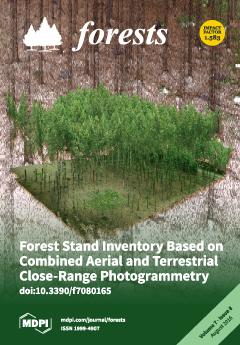Winter soil respiration (R
s) is becoming a significant component of annual carbon budgets with more warming in winter than summer. However, little is known about the controlling mechanisms of winter R
s in dryland. We made continuous measurements of R
s
[...] Read more.
Winter soil respiration (R
s) is becoming a significant component of annual carbon budgets with more warming in winter than summer. However, little is known about the controlling mechanisms of winter R
s in dryland. We made continuous measurements of R
s in four microsites (non-crust (BS), lichen (LC), moss (MC), and a mixture of moss and lichen (ML)) in a desert shrub-land ecosystem northern China, to investigate the causes of R
s dynamics in winter. The mean winter R
s ranged from 0.10 to 0.17 µmol CO
2 m
−2·s
−1 across microsites, with the highest value in BS. Winter Q
10 (known as the increase in respiration rate per 10 °C increase in temperature) values (2.8–19) were much higher than those from the growing season (1.5). R
s and Q
10 were greatly enhanced in freeze-thaw cycles compared to frozen days. Diurnal patterns of R
s between freeze-thaw and frozen days differed. Although the freeze-thaw period was relatively short, its cumulative R
s contributed significantly to winter R
s. The presence of biocrust might induce lower temperature, thus having fewer freeze-thaw cycles relative to bare soil, leading to the lower R
s for microsites with biocrusts. In conclusion, winter R
s in drylands was sensitive to soil temperature (T
s) and T
s-induced freeze-thaw cycles. The temperature impact on R
s varied among soil cover types. Winter R
s in drylands may become more important as the climate is continuously getting warmer.
Full article





